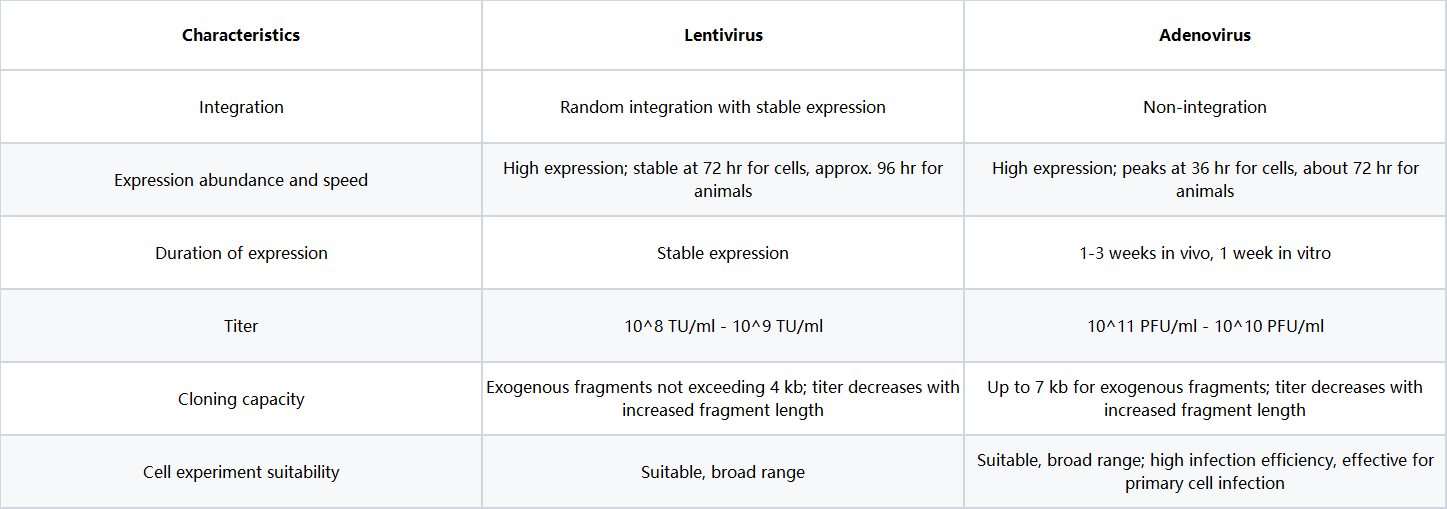
- Lentivirus
- Adeno-Associated
- Adenovirus
- Pseudovirus
- Vector
- Synthesis
- Autophagy Research
- CRISPR/Cas9
- Noncoding RNA
- Luciferase Assay
- Reagents
WHAT ARE YOU LOOKING FOR?
Virus-based gene vectors are common tools in molecular biology solutions that utilize viral carriers to deliver target genes to cultured cells or animals. Currently, commonly used viruses include lentivirus (LV), adenovirus (Ad), adeno-associated virus (AAV), and retrovirus (RV). These viral vectors each have advantages in enhancing gene expression and shortening experimental timelines, so selecting the appropriate virus for research is essential based on the experiment's objectives. This article addresses the distinctions between lentivirus and adenovirus during cell infection and how to choose between them.
Lentivirus, a type of retrovirus, has a double-stranded RNA genome and is based on HIV-1 (human immunodeficiency virus type 1) as a gene therapy vector. Lentivirus can introduce target genes into cells and randomly integrate these genes into the host genome, leading to stable expression within cell lines, and allows for the selection of stable transgenic cell lines. Lentivirus is suitable for almost all cell lines and features a broad infection range, stable expression, and high safety in operation.
Adenovirus, on the other hand, carries exogenous genes that do not integrate into the host cell genome; instead, these genes are expressed independently outside the genome. This allows for transient, high-level expression of target genes and avoids potential mutations and random effects induced by integration, offering high safety and controllability. Adenovirus is also suitable for almost all cell lines, primary cells, and certain tissues, with characteristics including a broad infection range, high efficiency, and large vector capacity.
The table below provides a detailed comparison of the two:

Based on the above knowledge, we can assess the following points for choosing a virus for cell infection.
First, consider the size of the target gene sequence. If the sequence is under 4 kb, lentivirus can be considered; if it exceeds 4 kb, adenovirus may be more appropriate.
Second, based on experimental goals, if stable cell lines are needed, lentivirus is preferred as adenovirus does not integrate into the genome and is only suitable for transient transfection.
Further, consider the type of target cells. For difficult-to-infect cells like neurons or certain primary cells, where establishing stable cell lines is unnecessary, adenovirus is recommended due to its significantly higher infection efficiency compared to lentivirus.
Additionally, if animal experiments are required, AAV is the first choice, but purified adenovirus can also be used. Given the lower titer of lentivirus, larger injection volumes are often required for animal experiments, which can trigger immune responses in animals.
In summary, researchers should choose the appropriate viral tools based on their specific circumstances and experimental requirements.